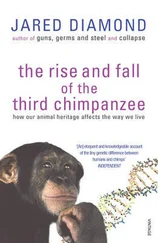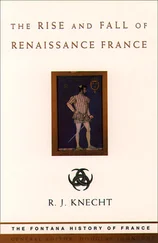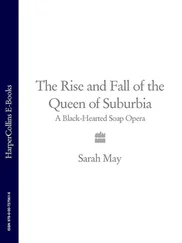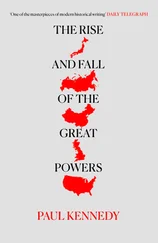Rapid modernization is affecting people’s spiritual lives as well as their personal relationships. Religion is the subject of two contradictory trends: on the one hand, religious observance often declines as the young loosen their ties to the traditions of their forefathers and spend their time on the two activities into which life is divided in the modern mind – work and leisure; on the other hand, people feel so insecure when they see the collapse of the customs which previously framed their lives that they seek the solid comfort of religious dogma and even of fundamentalism. Both trends are evident, sometimes in the same country or even the same family. Indonesians, for example, are struggling to explain the simultaneous increase of both decadence and religiosity among Moslems in Jakarta. Islam, Buddhism, Hinduism, Christianity and Taoism (ancestor worship) are the principal religions of south-east Asia, but they often thrive alongside – or in combination with – older forms of superstition and animism. In 1994 I stumbled on the sacrifice of a dog in an Akha hill-tribe village in northern Thailand. In all, a dog, two chickens and two pigs had been killed, and grains of rice and freshly cut leaves piled near the dog’s bleeding corpse in the hot afternoon sun. It turned out to be a routine sacrifice. Some villagers in the community of Paka Sukjai had fallen sick, and they paid a spirit-man fifty-two baht (in those days about two US dollars) to perform a ceremony to cure them. Elsewhere in Thailand, the Thais, like the Romans of old and many pre-industrial civilizations the world over, believe in household gods; almost every home and office has a small ‘spirit house’ to which offerings of food and incense are made. People pray to statues of the Buddha in the hope of winning the lottery; and occasionally they pray for fertility at shrines of great wooden phalluses.
In terms of numbers, Islam is south-east Asia’s dominant religion. It has long been asserted that Islam in Asia is ‘milder’ and less troublesome as a political force than it is in the Middle East, partly because many of Indonesia’s millions of Javanese Moslems have a more mystical and less rigid interpretation of Islam than their coreligionists. Yet the religion does loom large in political calculations, posing as it does a dilemma for governments which see it both as an enemy of modernization and a friend of moral, non-western ‘Asian values’. In Indonesia, Islamic separatists are confronting the government in Aceh in northern Sumatra, and Javanese Moslems regularly burn down Christian churches. Malaysia banned a fundamentalist Islamic sect called al-Arqam in 1994. Moslem guerrillas in southern Thailand and the southern Philippines, where they are minorities in predominantly Buddhist and Christian countries respectively, have fought sporadic battles against their rulers for years. The Indonesian and Malaysian governments – like their counterparts in the Middle East – have been forced to perform tricky balancing acts to defuse any Moslem opposition to their rule. They crack down hard on those they regard as extremists, but they also try to co-opt Moslems by making concessions and by appearing more religious themselves. As the ruling families and politicians of the Gulf states and Egypt have discovered, this can be a dangerous game. Once you have introduced a law that satisfies devout Moslems, it is very difficult to repeal or relax it without being condemned as an irreligious backslider. There is no question that Islam is the religion that has the most difficulty accepting the social and economic changes that appear to accompany every modern industrial revolution. But Malaysians such as Anwar Ibrahim, the former deputy prime minister who was an Islamic firebrand in his youth, are convinced that they can forge a society that is simultaneously Moslem, democratic and technologically advanced 6 . If they succeed, they believe they could become a model for other Islamic countries, which find themselves in a state of turmoil and decline 1,000 years after the time when they were at the forefront of science and civilization.
Even when south-east Asians agree on the need for a moral compass, however, there is no agreement on which way it should point. Like Europeans and Americans, Asians are tempted by the trivial, the sensational and the material. But the same governments which rail against the West for infecting Asia with liberalism and decadence are accused by their fiercest domestic opponents of being too ‘western’ themselves. Particularly among the region’s intellectuals, there is mounting disgust with the crude materialism of south-east Asia’s political leaders and their often boorish business associates. What was the point of all those magnificent economic growth statistics if the quality of life is not improved, if the poor simply swap rural misery for its urban equivalent, if the rich are stuck in traffic jams in their BMWs, if the great new cities of Asia are ugly and polluted, and if art and language are bastardized by quasi-American global culture? As in the Victorian England of Charles Dickens, there is a nostalgia for good things lost and a fear of recently created evils – as well as pride in the new prosperity and power.
The ‘Asian values’ argument is thus being turned against its creators. South-east Asian political leaders, their critics say, are guilty of taking the worst aspects of westernization and industrialization (materialism and consumerism) while ignoring the best (political reform, social idealism and philanthropy); at the same time they are keeping the worst aspects of the old order (authoritarianism and institutionalized corruption) while abandoning the best (the village sense of community, harmony with nature and traditional artistic sensibilities). Politicians are sensitive to such criticisms. Singapore’s leaders speak openly of the need to file down the rough edges of the coarsely materialistic nouveaux riches. They mount campaigns to promote the arts, protect the environment and encourage good table manners. The region’s poorer inhabitants, meanwhile, have their appetite for unaffordable consumer goods whetted by advertising and by the lifestyles portrayed in television soap operas. Parents in the hills of northern Thailand still sell their children for cash to brokers who send them into prostitution in the big cities. Moralizing does not suit south-east Asia’s leaders or its elders. When teenagers are criticized by their governments or their parents for their taste in music or their lax morals, they are able to point out bitterly that many of the politicians and entrepreneurs who should be their role models are at best amoral and opportunist and at worst drug-traffickers and gangsters.
The extraordinary influence of big business in the running of southeast Asia in the past three decades is examined in chapter 4. Close connections between unscrupulous businessmen and governments are not unprecedented at times of headlong economic growth: Britain and America also had their capitalist ‘robber barons’ in the heyday of industrialization, and they and their descendants were soon cloaked with respectability. Indonesian, Malaysian and Thai tycoons – starting with the sale of agricultural commodities such as rice and tapioca, moving through the manufacture of industrial products such as cars and computers and on to services such as retailing and airlines – have never been afraid to use the money they make to buy political influence and a comfortable place in high society. They make alliances with army generals and presidents’ children; indeed, sometimes they are army generals and presidents’ children. They have been involved in everything from drug-trafficking and illegal logging to lucrative and corrupt infrastructure projects for roads and telephone lines. In the early days, the businessmen can be openly thuggish, as they were in Cambodia in the early 1990s. But before long the drug barons and gangsters are dressed in Savile Row suits, their children are educated overseas, the family business is engaged in banking and finance and the past is all but forgotten.
Читать дальше












